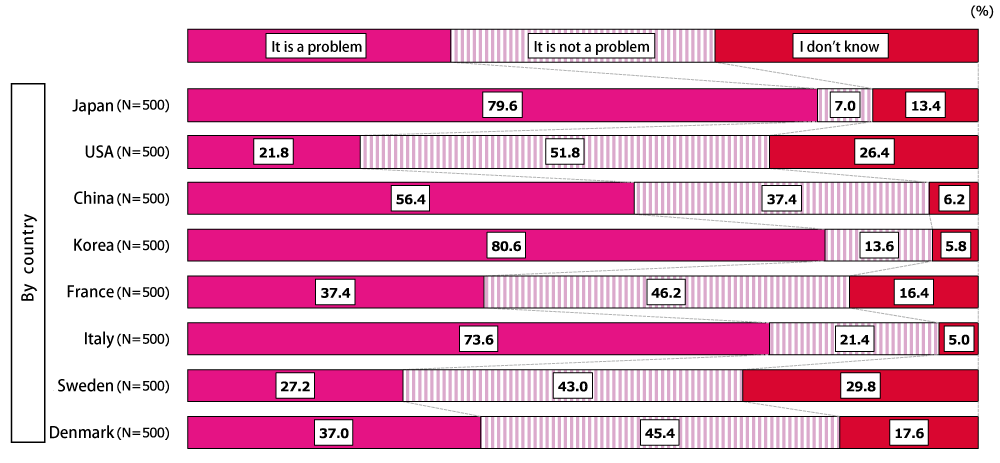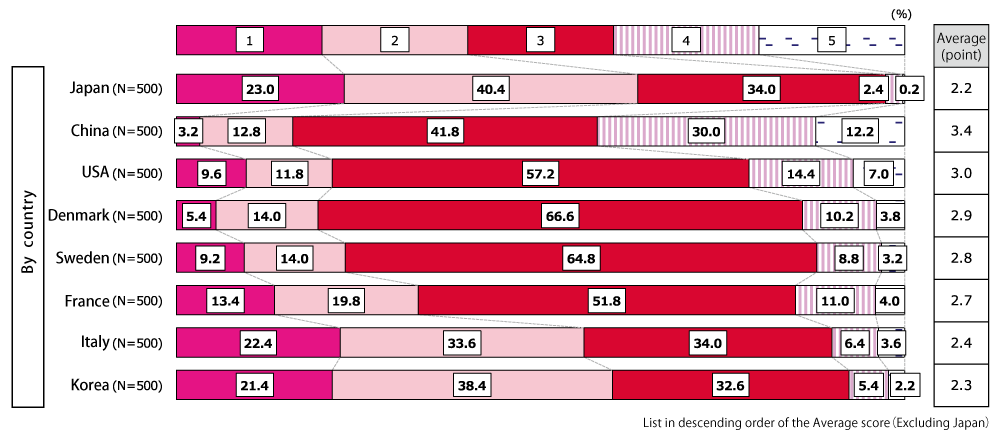3rd Awareness Survey of Women – Declining BirthratesLooking for a favorable work environment, ideal number of children seen as 2
In January, The Nippon Foundation carried out an awareness survey of women in eight countries on the subject of “declining birthrates.” The world’s population surpassed 7.7 billion people in 2020, and the United Nations expects this number to reach 10.0 billion later this century. Against this backdrop, many developed countries are experiencing declining birthrates, while the populations of developing countries, especially in Africa, continue to grow, with inequality and migration becoming major issues for international society.
The survey was carried out to gain a better understanding of how women in countries with declining birthrates feel about this situation, and the related issues they see. The survey was conducted among 500 women each in eight countries: Sweden and Denmark, which have expansive social welfare systems; France, where common law arrangements and other new forms of marital relationships are increasing; Japan, Italy and South Korea, where declines in birthrates are accelerating; the United States, where the population is expected to continue to grow as a result of immigration; and China, which from the 1980s until recently had a “one child” policy.
The survey asked respondents about the current situation and causes of the declining birthrate in their own country, problems they see, the cost of raising children relative to their household budget, and their evaluation of their country’s policies to address the declining birthrate. While differences among countries were reflected in their answers, common themes emerged as well. These included “creating a favorable workplace environment” as the most cited measure and “two” as the ideal number of children for a married couple as the top responses in all eight countries.
Questions were also asked on a variety of other subjects, including resistance to unmarried couples having children, and increasingly important international issues related to migration and refugees, including how these issues relate to labor shortages in their own country and issues related to coexistence with migrants. Please click on the link below to view the full survey results.
Survey Highlights
Q1. What are your views on the current declining birthrate in your country? (Choose 1 answer only)

Q6. On a scale of 1-5 (the highest), how would you rate your own country’s measures in response to the declining birthrate?

Survey Overview
| Countries covered: | China, Denmark, France, Italy, Japan, Sweden, South Korea, United States |
|---|---|
| Respondents: | Women aged 18 to 69 |
| No. of respondents: | 500 per country |
| Survey period: | January 21 – February 3, 2021 |
| Survey method: | Internet survey |
Contact
Public Relations Team
The Nippon Foundation
- Email: cc@ps.nippon-foundation.or.jp



